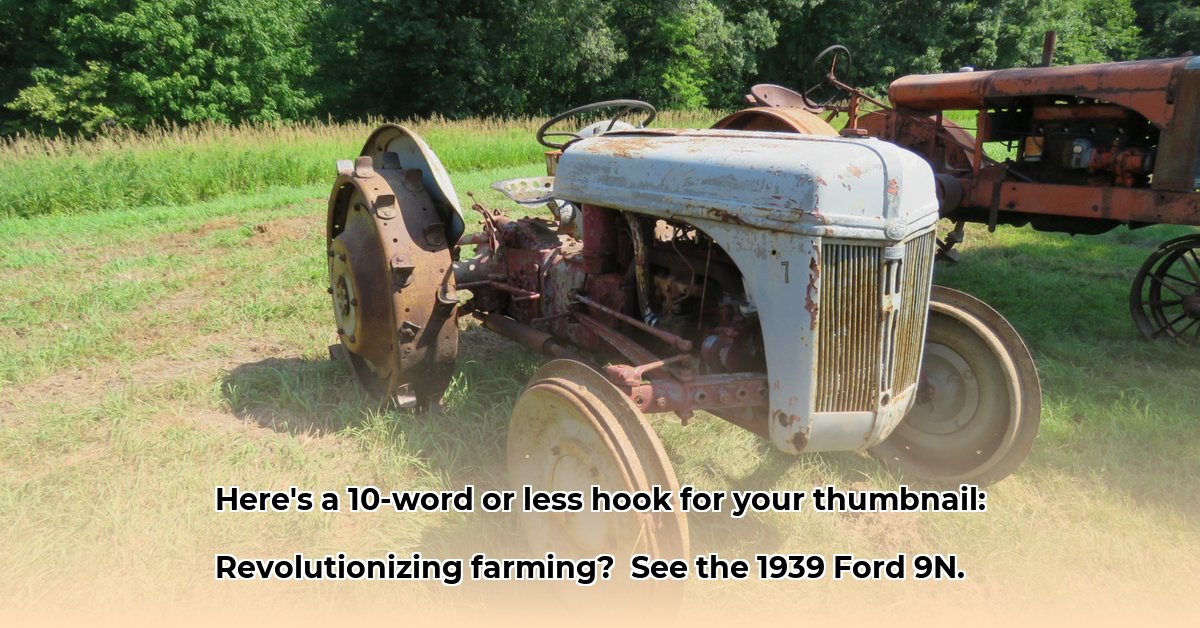
Imagine a world where farming was backbreaking toil, reliant on horses and human muscle. Then, picture a sturdy, relatively inexpensive machine rolling onto the scene, changing farming forever. That machine was the 1939 Ford 9N tractor. This isn't just a story about gears and engines; it's a tale of how one tractor empowered farmers, shaped the future of agriculture, and continues to captivate enthusiasts today. Let's delve into its history, design, and enduring legacy. For more in-depth information, visit the [Ford 9N website](https://1940-ford-9n-tractor.pages.dev).
The Agricultural Revolution of the 1930s
The late 1930s presented a challenging agricultural landscape. Farming was labor-intensive, and existing technology often proved inadequate. Horses and oxen were the primary power sources, limiting efficiency and productivity. Farmers desperately needed a more efficient and powerful solution. Enter the Ford 9N, a tractor priced affordably at around $585—a revolutionary price point that made mechanization accessible to even small-scale farmers. This affordability democratized farming, enabling individual farmers to achieve what previously required large teams of people and animals. How did this breakthrough impact farming practices? It dramatically increased output and transformed the agricultural landscape.
Technical Specifications and Innovative Design
The 9N, though modest by today's standards, was a marvel of engineering for its time. Its approximately 26.5 horsepower engine, a considerable increase over previous models, was its powerhouse. This, combined with a three-speed transmission and a groundbreaking rear Power Take-Off (PTO) (a system that allows the tractor's power to drive external implements), greatly increased versatility. The PTO was a true game-changer, enabling the use of previously labor-intensive equipment like hay balers and threshers. This innovation dramatically improved efficiency and reduced the physical demands of farming. Could you imagine the impact this had on farmers' lives?
Production, Impact, and the War Effort
The 9N’s success is undeniable, reflected in its astonishing production surge:
| Year | Units Produced (Approximate) |
|---|---|
| 1939 | Fewer than 100 |
| 1940 | 10,234 |
| 1941 | 45,976 |
| 1942 | 89,888 |
This dramatic increase showcases the high demand for this mechanized solution. The 9N's impact during World War II was particularly significant. With a significant portion of the workforce serving overseas, the 9N played a crucial role in maintaining domestic food production, ensuring national food security during a time of critical labor shortage. What other technological advancements influenced the course of the war?
Limitations and Enduring Successes
While the 9N was innovative, it wasn't without limitations. Its three-speed transmission and less-refined steering and brakes were stark compromises compared to modern tractors. However, these were typical for the era. Considering the context, its affordability, reliability, and powerful engine far outweighed its shortcomings. Its impact on small farms, where it brought about a previously unattainable level of productivity, was irrefutable. Did its limitations hinder its overall success?
A Legacy of Innovation
The Ford 9N's legacy extends far beyond its production years. It transformed farming, making mechanization accessible to those who previously couldn't afford or justify the expense. Its enduring appeal is evident in its continued presence on farms and its popularity among collectors and enthusiasts. What makes this tractor so enduringly iconic? It exemplifies ingenuity, affordability, and its profound effect on improving lives. The Ford 9N remains a symbol of innovation and pivotal technological advancements, demonstrating the power of technology to revolutionize entire industries and improve efficiency. Its story continues to inspire.